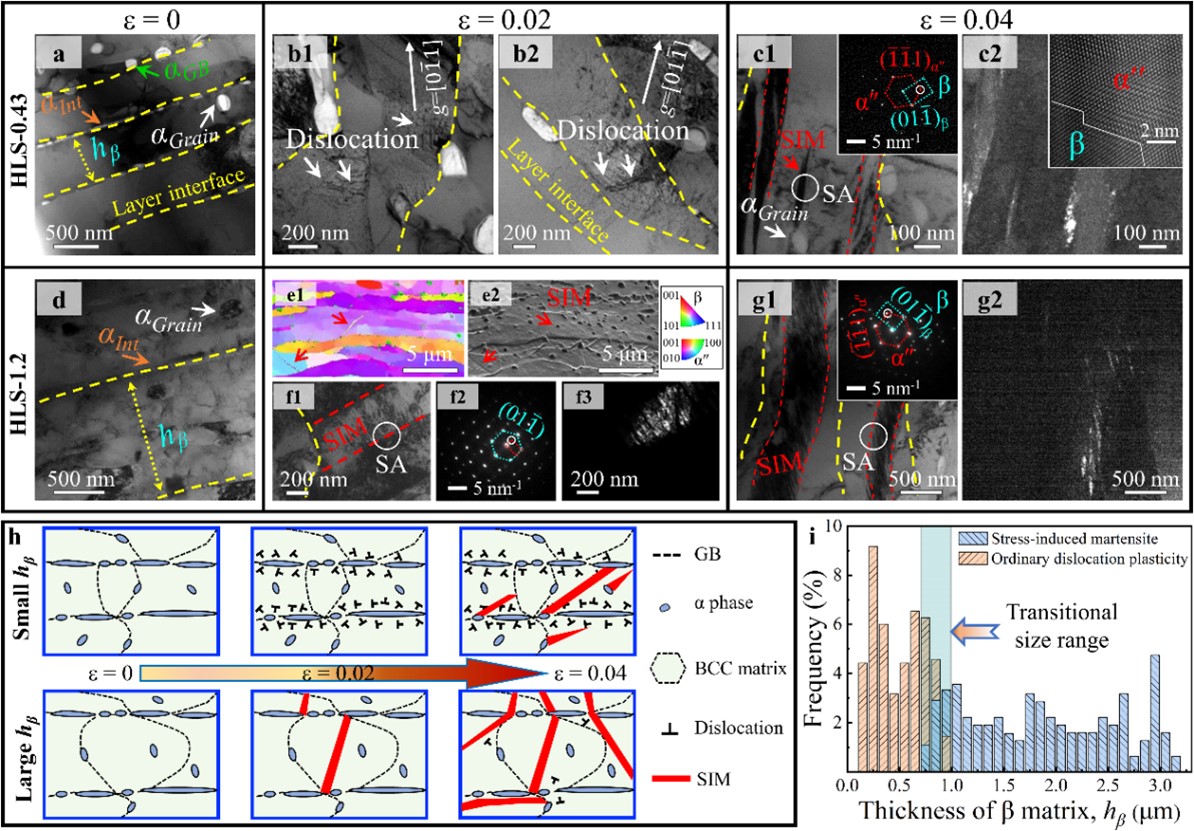Metastability-engineering, e.g., transformation-induced plasticity (TRIP), can enhance the ductility of alloys, however it often comes at the expense of relatively low yield strength, which limits the further engineering application of such alloys. As a matter of fact, there are two classic strategies to strengthen metastable alloys. The first is to tailor the deformation mechanisms transformed from stress-induced martensite (SIM) to twinning, and even to ODP by increasing the phase stability. However, this strategy failed to tune the sequential activation of mechanisms from ODP to SIM or twinning in a metastable phase without variation in the chemical composition; namely, there is no deformation mechanism transition with increasing plastic strains when ODP occurs first in alloys. The second is to architect heterogeneous structures in terms of the spatial confinement imposed by grain boundaries (GBs), layer interfaces and/or precipitates to control the activation of plastic carriers, among which the heterogeneous laminate structure (HLS) enables us to readily achieve this goal via the combination of ODP and SIM in hard-stable and soft-metastable constituents, respectively. Thus, it is great challenge by far to realize the sequential activation from ODP to SIM or twinning with increasing stresses/strains by through the size constraining effect that can effectively delay the activation of TRIP or TWIP in a single-phase metastable alloy.
Here, unlike the prior HLS with a high fraction of the soft metastable phase in the hard matrix, we propose a different design concept — namely, a low fraction of multi-morphologically hard-yet-deformable α nanoprecipitates distributed in the soft laminated metastable β-matrix to achieve desired combination of strength and ductility in a model Ti-1Al-8.5Mo-2.8Cr-2.7Zr (wt.%) alloy. The advantage of this HLS with metastable β-layers decorated by multiple-morphological α-nanoprecipitates lies in (i) The submicron-lamellar microstructure, which enables the operation of ODP in lieu of SIM in the metastable matrix at low stresses/strains to realize high yield strength. (ii) The continuously improved work-hardening ability and stress level enable the SIM to occur at high strain to maintain high strength and ductility. (iii) These α nanoprecipitates serve as local stress raisers to stimulate SIM in the β-matrix and subsequently trigger interfacial delamination toughening to ductilize/toughen alloys. By using hot-rolling & short-time-solutioning processing, the HLS alloys of different thicknesses hβ (0.3 ~ 3.2 μm) with trifunctional nanoprecipitates were prepared, and reveals a critical size of ~0.80 ± 0.07 μm for the SIM-to-ODP transition. As a result, compared with their equiaxial grained structure (EGS) siblings, the yield strength of HLS alloys decorated with the trifunctional α nanoprecipitates is doubled almost without losing their uniform elongation. Our findings demonstrate how deformation mechanisms can be deliberately activated by tailoring the characteristic size (e.g., grain sizes, precipitate spacing) of microstructure, along with the controllable phase stability of the matrix, to optimize strength and ductility for superior fracture resistance.

Fig. 1 The deformation mechanism evolution and critical size effect of heterogeneous laminated Ti-1Al-8.5Mo-2.8Cr-2.7Zr alloys.

Fig. 2 The predicted critical stress for the activation of SIM and ODP, reveals a critical size of ~0.80 ± 0.07 μm for the SIM-to-ODP transition. A comparison of yield strength vs. uniform elongation of our β-Ti alloys with reported metastable β-Ti alloys.
These results are published on the journal Nature Communications titled as “Trifunctional nanoprecipitates ductilize and toughen a strong laminated metastable titanium alloy”. The first-authors of this work are Chongle Zhang (Ph.D. student at Xi’an Jiaotong University) and Shuaiyang Liu (Ph.D. student at Xi’an Jiaotong University). The co-corresponding authors include Profs. Jinyu Zhang (Xi’an Jiaotong University) and Jun Sun (Xi’an Jiaotong University). Gang Liu and Jie Kuang are also involved in this work. The project is funded by National Natural Science Foundation of China and Shaanxi Province Youth Innovation Team Project.
Link: https://www.nature.com/articles/s41467-023-37155-y


